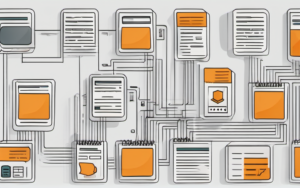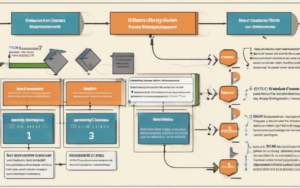In today’s digital world, our identities are increasingly intertwined with online platforms and services. From banking to social media, we rely on digital identity verification to access crucial resources. But traditional identity management systems are often centralized, vulnerable to breaches, and lack user control. This is where blockchain technology steps in, offering a revolutionary approach to digital identity management.
Understanding Blockchain for Digital Identity
Blockchain, the technology behind cryptocurrencies like Bitcoin, is a distributed ledger that records transactions in a secure and transparent manner. Unlike centralized databases, blockchain is decentralized, meaning data is stored across multiple computers, making it highly resistant to manipulation or hacking. This inherent security and transparency make blockchain a powerful tool for managing digital identities.
Decentralized Ledger Technology
At its core, blockchain is a shared, immutable record of transactions. Each transaction is grouped into blocks, which are then linked together in a chronological chain. This creates a secure and transparent history of data, ensuring that any changes or attempts to tamper with the information are immediately visible to all participants.
Immutability and Transparency
One of the key advantages of blockchain is its immutability. Once a transaction is recorded on the blockchain, it cannot be altered or deleted. This ensures the integrity and authenticity of data, making it an ideal platform for storing and verifying digital identities. Transparency further strengthens the system, allowing all participants to view and verify transactions, fostering trust and accountability.
Cryptographic Security
Blockchain utilizes advanced cryptography to secure transactions and protect user identities. Each transaction is encrypted using unique keys, ensuring only authorized individuals can access and modify data. This robust security framework prevents unauthorized access, making blockchain a highly secure platform for managing digital identities.
Key Components of Blockchain-Based Identity Systems
Blockchain technology empowers individuals to take control of their digital identities through several key components:
Self-Sovereign Identity (SSI)
SSI is a concept that allows individuals to control their own digital identities, independent of centralized authorities. By leveraging blockchain, individuals can store and manage their identity data in a secure and portable manner, enabling them to share only the necessary information with relevant parties.
Verifiable Credentials
Verifiable credentials are digital documents that provide proof of identity attributes, such as education, employment, or vaccination status. These credentials are stored on the blockchain and can be easily shared and verified, eliminating the need for cumbersome paper-based documents.
Identity Wallets
Identity wallets are digital containers that store and manage individuals’ digital identities and verifiable credentials. These wallets can be accessed through mobile applications or web browsers, allowing users to manage their identities and share information with others securely.
Benefits of Blockchain for Digital Identity Management
Blockchain technology offers a wide range of benefits for digital identity management, leading to a more secure, efficient, and user-centric system:
Enhanced Security and Privacy
Blockchain’s decentralized and immutable nature makes it highly resistant to attacks and data breaches. By storing identity data on the blockchain, users can protect their sensitive information from unauthorized access and manipulation, enhancing their privacy and security.
Increased Control and Ownership
Blockchain empowers individuals to take control of their digital identities. With SSI, users can choose what information to share and with whom, giving them greater control over their data and enhancing their autonomy.
Streamlined Verification Processes
Blockchain-based identity systems streamline verification processes by eliminating the need for multiple intermediaries. Verifiable credentials can be easily shared and verified, reducing paperwork and processing time, making transactions faster and more efficient.
Reduced Costs and Fraud
By eliminating the need for centralized authorities and intermediaries, blockchain can significantly reduce the cost of identity verification. Furthermore, the immutability of the blockchain makes it difficult to forge or alter identity data, reducing fraud and increasing trust in the system.
Real-World Applications of Blockchain Identity
Blockchain technology has the potential to revolutionize digital identity management across various industries:
Government and Citizen Services
Governments can utilize blockchain to streamline citizen services, such as passport issuance, driver’s licenses, and voting. Blockchain-based identity systems can enhance security, reduce fraud, and provide citizens with greater control over their personal data.
Healthcare and Medical Records
Blockchain can revolutionize healthcare by providing secure and transparent management of medical records. Patients can control access to their medical data, ensuring privacy and allowing healthcare providers to access the necessary information securely and efficiently.
Financial Services and KYC
Financial institutions can leverage blockchain for Know Your Customer (KYC) processes, streamlining customer onboarding and reducing fraud. Blockchain-based identity verification systems can simplify the process, making it faster, more secure, and cost-effective.
Education and Employment
Blockchain can be used to create secure and verifiable credentials for education and employment. Universities can issue digital diplomas on the blockchain, making them tamper-proof and easily verifiable by employers. Similarly, employment records can be stored and managed on the blockchain, providing employers with a secure and transparent view of employee credentials.
Challenges and Considerations
While blockchain holds immense promise for digital identity management, it also presents certain challenges and considerations:
Scalability and Performance
As the number of transactions and users on the blockchain increases, ensuring scalability and performance becomes crucial. Blockchain systems need to be designed to handle large volumes of data and maintain fast transaction speeds.
Interoperability and Standardization
For blockchain-based identity systems to be widely adopted, interoperability and standardization are essential. Different blockchain platforms and identity systems need to be able to communicate and exchange data seamlessly, ensuring seamless integration and user experience.
Regulatory Landscape
The regulatory landscape surrounding blockchain identity is still evolving. Governments and regulatory bodies need to develop clear guidelines and frameworks to ensure responsible and secure use of blockchain for digital identity management.
The future of digital identity is poised for transformation. Blockchain technology holds the key to creating a more secure, efficient, and user-centric system. By embracing blockchain, individuals can gain greater control over their digital identities, businesses can streamline processes, and governments can improve citizen services. The revolution has begun, and it is time to embrace the possibilities of blockchain for digital identity management.




